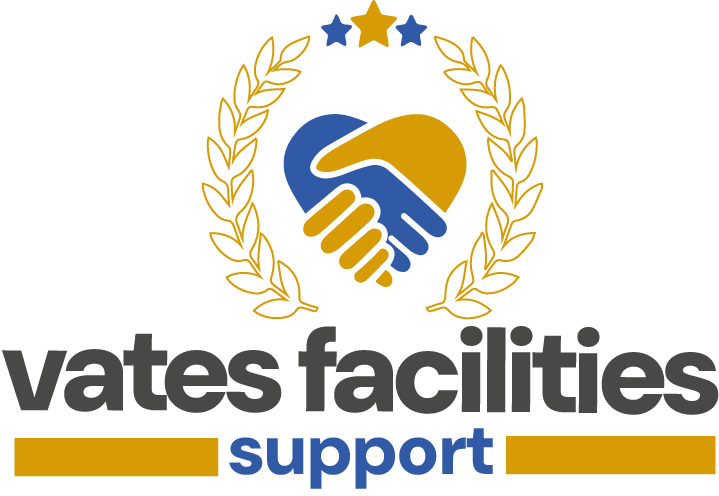Keeping Your Workplace Safe: A Comprehensive Guide to Industrial Cleaning Safety
Are you prioritizing workplace safety like it’s your top employee? Picture this: your team confidently navigating industrial cleaning tasks with precision and protection because safety isn’t just a box to tick but a state of mind. Amid the hustle and bustle of the cleaning industry, ensuring a safe environment for your cleaning staff isn’t just essential; it’s the bedrock of your business. From knowing the ins and outs of safety measures to conducting thorough risk assessments, every cleaning operation must be a symphony of safety protocols to avoid potential workplace hazards.
In this comprehensive guide to industrial cleaning safety, we explore workplace safety measures and compliance management and their key role in securing a safe workplace environment. Stay tuned for real-world examples, best practices for safety cleaning procedures, and tips on navigating hazardous materials like a pro. Let’s pave the way for a cleaner, safer, and more secure workplace together.
Introduction to Industrial Cleaning Safety
Industrial cleaning procedures are crucial in maintaining a safe and secure workplace environment. By following proper safety protocols and measures, businesses can effectively minimize risks and ensure the well-being of their employees. The significance of safety in industrial cleaning cannot be overstated. It not only protects workers from accidents and injuries but also safeguards the organization’s overall productivity and reputation. By prioritizing safety, businesses can demonstrate their commitment to employee well-being and create a positive work culture.
Implementing comprehensive safety measures in industrial cleaning procedures is essential to mitigate potential hazards. This includes understanding and adhering to industry best practices, conducting regular risk assessments, and providing appropriate training to cleaning staff. By doing so, businesses can reduce the risks of workplace accidents, minimize exposure to hazardous materials, and prevent the spread of infections such as COVID-19. Creating a safe and secure workplace environment through proper cleaning protocols is a proactive approach that pays off in the long run. It protects employees’ health and safety and enhances the efficiency and success of the cleaning business.
Remember, safety should always be the top priority when it comes to industrial cleaning. By establishing a safety culture, businesses can thrive in today’s world and ensure the well-being of their workforce.
Understanding Cleaning Safety Principles
Regarding industrial cleaning, safety should always be a top priority. By understanding the principles and best practices of cleaning safety, you can effectively minimize risks and create a safe work environment. Here are some key principles to keep in mind:
- Risk Assessment: Conduct a thorough risk assessment before cleaning. Identify potential hazards and take appropriate measures to mitigate them.
- Personal Protective Equipment (PPE): Provide cleaning staff with the necessary PPE, such as gloves, masks, and goggles to protect against chemical exposures, airborne particles, and physical injuries.
- Proper Training: Ensure all cleaning employees receive adequate training on safety protocols, equipment usage, and emergency procedures.
- Hazardous Material Handling: Follow proper procedures for handling and disposing of hazardous materials, including labeling containers and minimizing potential exposure.
- Regular Inspection: Regularly inspect cleaning equipment and machinery to ensure they are well-maintained and in safe working condition.
Incorporating these principles into your cleaning procedures can create a safer work environment for your employees and reduce the risk of accidents or injuries. Remember, safety is everyone’s responsibility.
Common Hazards in Industrial Cleaning
Industrial cleaning procedures involve inherent risks and hazards that must be recognized and managed effectively. By understanding these common hazards, you can proactively mitigate potential risks and ensure a safer workplace environment.
- Slips, Trips, and Falls: Uneven surfaces, wet floors, and cluttered areas can lead to slips, trips, and falls. Regularly inspect the work area for potential hazards, use warning signs, and maintain proper housekeeping practices.
- Chemical Exposure: Industrial cleaning often involves working with hazardous chemicals. Improper handling or lack of personal protective equipment (PPE) can result in chemical burns, respiratory issues, or other health complications. Ensure proper training on chemical handling, use appropriate PPE, and provide clear instructions for safe chemical storage and disposal.
- Ergonomic Strains: Repetitive movements, improper lifting techniques, and prolonged periods of physical exertion can lead to musculoskeletal disorders. To minimize the risk of injuries, implement ergonomic practices, such as proper lifting techniques, regular breaks, and ergonomic equipment.
- Machinery and Equipment Hazards: Working with industrial cleaning equipment carries the risk of entanglement, electrical hazards, and other accidents. Conduct regular maintenance and inspections, provide proper training on equipment operation, and ensure workers are aware of emergency shutdown procedures.
- Biological Hazards: Cleaning certain industrial spaces may expose workers to biological hazards, such as mold, bacteria, or viruses. Provide appropriate PPE, use effective disinfection protocols, and ensure proper ventilation in confined spaces.
Remember, awareness and proactive risk assessments are crucial in preventing accidents. Understanding and addressing these common hazards can create a safer environment for your employees during industrial cleaning procedures.
Implementing EHS Management
Implementing effective management of Environmental, health, and safety (EHS) is crucial in industrial cleaning operations. By prioritizing EHS protocols, you can create a safe and healthy workplace environment for your employees. Here are key aspects to consider:
- Establishing EHS Policies
Develop comprehensive policies that outline safety procedures and standards for industrial cleaning operations. These policies should cover risk assessment, hazard identification, and emergency response protocols.
- Training and Education
Ensure that all cleaning staff receive proper training on EHS practices. Provide them with the necessary knowledge and skills to handle hazardous materials safely, operate cleaning equipment, and follow safety procedures.
- Risk Assessment and Control
Regularly assess the risks associated with cleaning activities and implement control measures to minimize hazards. This includes identifying potential exposure to chemicals, implementing proper waste management procedures, and promoting ergonomic practices to prevent musculoskeletal disorders.
- Incident Reporting and Investigation
Establish a system for reporting and investigating incidents promptly. This allows you to identify root causes, implement corrective actions, and prevent similar incidents from occurring in the future.
- Continuous Improvement
Regularly review and update your EHS management systems to stay current with industry best practices and regulatory requirements. Seek feedback from cleaning staff and continuously incorporate their suggestions to improve safety measures.
Remember, implementing effective EHS management ensures the well-being of your employees and enhances the overall productivity and success of your industrial cleaning operations.
Tips for Ensuring a Safe Workplace
During cleaning procedures, it is crucial to create a safe and secure workplace environment to protect employees and maintain a risk-free space. By following these practical tips and recommendations, you can minimize potential hazards and ensure the well-being of everyone involved.
- Conduct a thorough risk assessment:
Before initiating any cleaning task, assess the potential risks and hazards present in the work area. Identify chemical substances, electrical equipment, and other potential dangers that may pose a threat. This evaluation will help you implement appropriate safety measures and develop effective cleaning protocols.
- Provide proper training:
Ensure that all cleaning staff receive comprehensive training on safety protocols. Educate them about the proper use of personal protective equipment (PPE), the safe handling of cleaning equipment, and the correct procedures for handling hazardous materials. Regularly conduct training programs to refresh their knowledge and reinforce safe practices.
- Use appropriate PPE:
Equip cleaning staff with personal protective equipment (PPE), including gloves, masks, goggles, and respirators. The type of PPE may vary depending on the cleaning task and potential risks involved. Provide clear instructions on using, cleaning, and storing the equipment properly.
- Implement effective communication:
Establish a transparent and open line of communication between cleaning staff, supervisors, and other employees. Encourage employees to report any safety concerns or hazards they observe during cleaning procedures. Regularly communicate safety guidelines and provide updates on any changes or new protocols.
- Practice proper waste management:
Ensure proper disposal of waste materials to prevent accidents or contamination. Label containers for different types of waste, including hazardous materials, and educate cleaning staff on the correct disposal methods. Regularly empty trash cans and dispose of waste in designated areas.
- Regularly inspect and maintain equipment:
Periodically inspect all cleaning equipment to identify any defects or malfunctions that could pose safety risks. Repair or replace damaged equipment promptly to prevent accidents during cleaning procedures. Regular maintenance and servicing will help ensure cleaning equipment’s safe and efficient operation.
- Stay updated with cleaning safety standards:
Keep abreast of the latest cleaning safety standards and regulations set forth by regulatory bodies. Regularly review and update your cleaning protocols to comply with these guidelines. Adhering to industry standards will help create a safe and compliant workplace environment.
Remember, prioritizing safety in the workplace is essential for protecting employees and maintaining the reputation and success of your cleaning business. Implement these tips and take extra measures to minimize risks, reduce accidents, and promote a safe and healthy work environment.
> “Safety isn’t expensive, it’s priceless.” – Anonymous
Regulatory Bodies in Cleaning Safety for International and Bahrain
In cleaning safety, both internationally and in Bahrain, several regulatory bodies play crucial roles in ensuring the safe handling, use, and disposal of chemicals to protect human health and the environment.
International Regulatory Bodies:
- Stockholm Convention: A global treaty that aims to eliminate or restrict the production and use of persistent organic pollutants (POPs) to protect human health and the environment.
- Basel Convention: An international treaty that controls the transboundary movements of hazardous waste and their disposal to minimize their impact on human health and the environment.
- Vienna Convention for the Protection of the Ozone Layer and Montreal Protocol: Aimed at protecting the ozone layer by phasing out substances that deplete it.
- Convention on Biological Diversity and Combating Desertification: Addressing biodiversity loss and desertification respectively.
- Framework Convention for Climate Change and Kyoto Protocol: Focused on mitigating climate change by reducing greenhouse gas emissions1.
Bahrain’s Regulatory Framework:
- Supreme Council for Environment: This body oversees environmental issues in Bahrain, emphasizing conservation, protection of natural resources, and sustainable development practices.
- Environmental Affairs (EA): Responsible for implementing environmental policies, including waste management, cleaner production initiatives, and monitoring industrial and domestic waste disposal practices in Bahrain..
These regulatory bodies, at both international and national levels, are instrumental in promoting chemical safety, waste management, and environmental sustainability by setting standards, monitoring compliance, and fostering cooperation to effectively address global ecological challenges.
By meticulously following the outlined advertising strategies, VATES Facilities Support WLL is poised to significantly enhance its visibility and service engagement within Bahrain’s cleaning industry landscape. From leveraging targeted Google Ads campaigns to optimizing landing pages for conversion, each step is designed to attract and convert potential customers effectively. Regular reporting, budget review, and creative adjustments ensure that our strategies remain dynamic and responsive to market demands and customer feedback.
We encourage businesses and individuals needing top-tier cleaning services to take the first step towards a cleaner, more efficient environment by contacting VATES Facilities Support WLL. Our team is committed to providing unparalleled cleaning solutions tailored to your needs. For more information, to schedule a consultation, or to start your journey towards a spotless space, visit our website at vfsupport.com or contact us directly at sales@vfsupport.com. Trust VATES to keep your premises immaculate, ensuring a healthier and more productive environment for everyone.
Related Articles


Leave a Reply